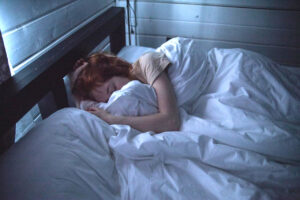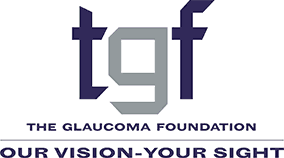~Tips for Getting a Good Night’s Sleep~

Glaucoma is a serious ocular condition that can potentially lead to vision loss, and it may also be linked to other illnesses and sleep disorders. Studies have suggested that having glaucoma increases the risk of certain chronic illnesses and sleep disruptions, though the cause of this correlation is still unclear. Individuals who suffer from glaucoma should be aware of these potential health complications as well as take steps to reduce their risks.
As much, sleep is essential for your overall health. A good night’s rest recharges your mind and body, leaving you energized and refreshed. You may even find that you look younger when you aren’t dealing with signs of a lack of sleep, like under-eye circles. However, getting your Z’s isn’t always easy. If you’ve ever spent a night tossing and turning, you know how tough it can be. Read on for some practical pointers to help you get your rest.
Create a soothing space for sleeping
Start by making sure your bedroom is a sleep-friendly space. If your mattress is old and you’re waking up with back pain every day, get a new one. If you’re bothered by light, invest in black-out curtains to block it out. Other tips for creating a sleep-friendly bedroom include using essential oils, implementing cool tones, and avoiding mirrors. Lowering the room temperature can also be helpful.
Invest in sleep-friendly accessories
Once you’ve addressed your bedroom’s basic setup, think about what additional accessories you can get to make it even cozier. For example, a new set of silky sheets can make your bed even more comfortable. Technology can also be useful. You might listen to a white noise app, for example. ZDNET has a roundup of white noise apps that will help you drift off, like myNoise, Atmosphere, and BetterSleep.
Get a comfortable bedtime outfit
If you’re falling asleep in the same pair of ratty old sweatpants every night, it’s time to make a change. Comfortable pajamas and nightgowns can make your sleep experience feel like a luxury. Look for clothes in breathable materials that you feel confident in. There’s no need to sacrifice style for comfort. This may work when searching for suitable sleeping clothes. You’ll find an array of colors, styles, and materials to choose from.
Watch your food and liquid intake
What you eat and drink before bed can impact the quality of your sleep. It’s smart to stay away from caffeine, which can leave you energized. Alcohol is also detrimental to sleep quality. Piedmont Health explains that alcohol negatively impacts REM, rapid eye movement, and sleep. As a result, you’ll feel less rested. On the flip side, there are foods and drinks that can make sleeping easier. Foods like almonds, turkey, and chamomile tea are helpful.
Pamper your eyes before bed
Before you close your eyes for the day, give them some TLC. If you require eye drops for medical purposes, such as glaucoma, make sure you take them at the appropriate time before going to sleep. It’s also wise to ditch your phone, tablet, TV, and other screens before bed. The blue light from your screen can interfere with your body’s natural circadian rhythm. This can make it harder to drift off when you shut your eyes, leaving you restless and awake.
Try a warm bath to drift off
If you’ve taken all of the above steps and are still struggling to sleep, try taking a warm bath or shower before bed. Research shows that this can make it easier to fall asleep. When you take a warm bath or shower, you raise your body temperature. As your body cools down afterward, you’ll naturally begin to feel drowsy. Maximize the impact of your warm bath or shower by combining the experience with some sleep-inducing essential oils, like lavender.
Tossing and turning at night, unable to sleep, can be incredibly frustrating. The good news is that there are steps you can take to improve your quality of sleep. From getting comfortable pajamas to creating a sleep-friendly bedroom, try the hacks above for help.
Article written by Camille Johnson
For more content like this, visit the Resource Center and the News section of The Glaucoma Foundation’s website.
